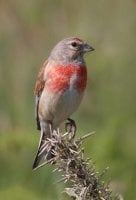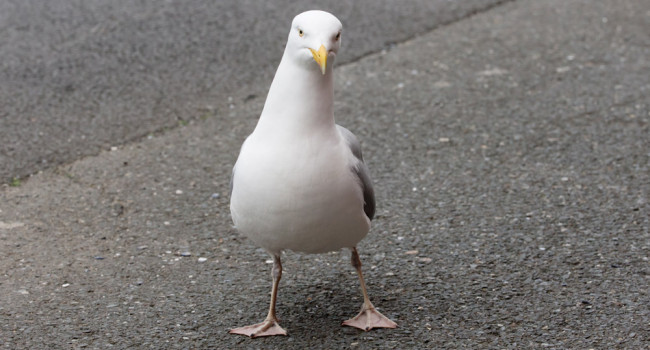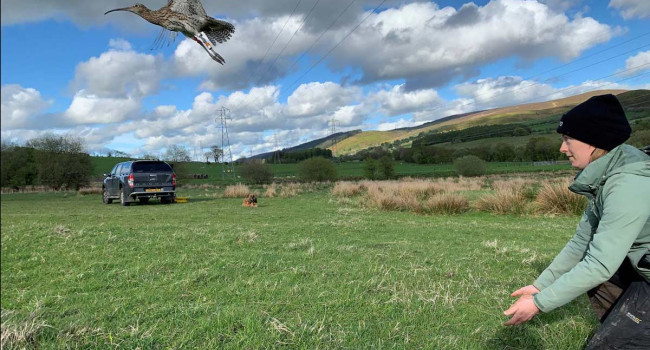Research delivers new tools for understanding why Britain’s bird populations are in decline
01 Jul 2015 | No. 2015-27
Researchers at the British Trust for Ornithology (BTO) have delivered a powerful new tool which will help target conservation efforts to support declining populations of woodland and farmland bird species. The tool, which applies a new approach to the analysis of data collected by volunteer birdwatchers through the Breeding Bird Survey (BBS), increases the value of the ‘wild bird indicators’ used to monitor bird communities in different regions and habitats.
The countryside is continually changing, affecting the wildlife around us. One of the ways in which the impacts of this change are monitored is through networks of dedicated volunteers, who use standardised methods to survey the same locations year-on-year. The results of these surveys are summarised by biodiversity indicators, including the farmland bird indicator and woodland bird indicator, both of which provide a mechanism by which the success of conservation efforts and policy decisions can be measured.
The national-scale declines seen in the farmland bird indicator (now at 45% of the 1970s baseline) and woodland bird indicator (now at 72% of the 1970s baseline) mask significant regional and habitat-based variation in the patterns seen. This hidden variation is likely to be important, potentially revealing the underlying mechanisms driving the population changes that we are seeing. By using new statistical approaches, BTO researchers have for the first time been able to reveal these all-important patterns.
Using data from the BTO/RSPB/JNCC Breeding Bird Survey (spanning 1995-2008), BTO researchers looked at woodland and farmland bird communities – each of which was split into ‘generalist species’ and ‘specialist species’. The results revealed that while farmland bird populations declined nationally by 11% over the period 1995 to 2008, these losses were substantially more extreme in south-east England, where the losses were being driven by declines in farmland specialists like Linnet, Skylark, Starling and Yellowhammer.
In contrast to the east-west pattern seen in farmland birds, the research revealed evidence of a north-south gradient in woodland bird population trends, with populations in the south fairing much worse than those in the north, with declines of 20% or more in south-west and south-east England, and East Anglia. Increasing deer populations and a changing climate may be having a detrimental effect on woodland birds like Blackbird, Dunnock and Willow Warbler.
Dr Dario Massimino, BTO Research Ecologist and lead author, commented "While further work is required to properly attribute the spatial patterns we are seeing to particular drivers, the fact that both farmland and woodland indicator trends are most negative in the south-east suggests that bird populations in this region may be under the greatest pressure. The south-east is the area of the country with the greatest degree of agricultural intensification, greatest fragmentation of natural habitats and significant urban expansion."
Dr James Pearce-Higgins, BTO Director of Science, commented "Our results show that there is considerable potential to use citizen science monitoring programmes like the Breeding Bird Survey, to identify policy-relevant and informative spatial patterns in bird population trends. The reporting of those patterns in a spatial indicator can provide an effective way to identify to decision makers and other audiences where particular population changes are occurring."
Dr Deborah Procter, Senior Monitoring Ecologist at JNCC, commented "Biodiversity indicators provide us with a great communication tool; they provide an easily understood summary of underlying species trends. This paper describes a spatially explicit indicator which can be used to understand trends at a relatively fine scale. This helps to pinpoint where more detailed investigation of the underlying drivers impacting species in a given area is needed. The examples explored in this paper focus on bird species associated with farmland and woodland and shows how population trends vary across the UK within each defined bird community. This paper is a good example of the policy relevant work done under the JNCC-BTO Monitoring of Birds and the Environment contract and shows the value of long-term monitoring programmes such as the Breeding Bird Survey."
Dr Richard D Gregory, Head of Monitoring and Research at RSPB, commented “This is an exciting new piece of research mapping the spatial patterns of population change in farmland and woodland birds in the UK for the first time and, in doing so helping us to understand the drivers of change and to pinpoint our conservation actions.”
Notes for Editors
- This research has just been published in Ecological Indicators, a leading scientific journal. The paper is: Massimino, D., Johnston, A., Noble, D.G. & Pearce-Higgins, J.W. (2015) Multi-species spatially-explicit indicators reveal spatially structured trends in bird communities. Ecological Indicators. DOI 10.1016/j.ecolind.2015.06.001
- The BTO/JNCC/RSPB Breeding Bird Survey (BBS) is a Partnership jointly funded by the BTO, RSPB and JNCC (on behalf of the Countryside Council for Wales, Natural England, the Council for Nature Conservation and Countryside and Scottish Natural Heritage), with fieldwork conducted by dedicated volunteers and BTO members.
- Information on individual farmland and woodland bird species can be found on the BTO BirdTrends web pages (http://www.bto.org/birdtrends).
- The BTO is the UK's leading bird research charity. A growing membership and up to 60,000 volunteer birdwatchers contribute to the BTO's surveys, collecting information that underpins conservation action in the UK. The BTO maintains a staff of 100 at its offices in Thetford, Stirling, Bangor (Wales) and Bangor (Northern Ireland), who analyse and publicise the results of surveys and projects. The BTO's work is funded by BTO supporters, government, trusts, industry and conservation organisations.www.bto.org
Contact Details
Dr James Pearce-Higgins
(BTO Director of Science)
Office: 01842 750050
(9am to 5.30pm)
Email: james.pearce-higgins [at] bto.org
Paul Stancliffe
(BTO Media Manager)
Office: 01842 750050
(9am to 5.30pm)
Mobile: 07585 440910 (anytime)
Email: press [at] bto.org
Images are available for use alongside this News Release.
Please contact images [at] bto.org quoting reference 2015-27
The BTO has an ISDN line available for radio interviews.
Please contact us to book an interview
Office: 01842 750050







Share this page